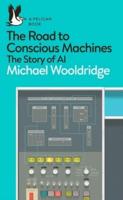Publisher's Synopsis
In 1956, when John McCarthy held the first academic sessionon the particular topic, the term artificial intelligence wasintroduced and made open to the audience as a technologicalinnovation for an enterprise-level transformation. But the pathto understanding whether machines can really think in ahuman way started long before that. Artificial Intelligence or AIcan be defined as a machine, robot, or a product and servicestrategy to determine how people can think and act logically ina given situation. AI is a study of how human brain thinks, learns, decides, and works, when trying to resolve ensuingproblems.And eventually, the study of AI has created intelligent softwaresystems. Artificial intelligence carries a goal in mind to improveprocesses related to human knowledge, such as learning, reasoning and above all, problem-solving.It is a widely accepted and age-old proven truth that the veryword viz., intelligence is intangible by nature. It comprises oflearning, reasoning, perceiving, problem-solving and of course, assimilates the element of linguistic intelligence. Similarly, thefunctional realm of artificial intelligence revolves aroundreasoning, knowledge representation, learning, planning, realizing, processing of natural language and the freedom to move andmanipulate objects. The general intelligence sector has long-termintenti










